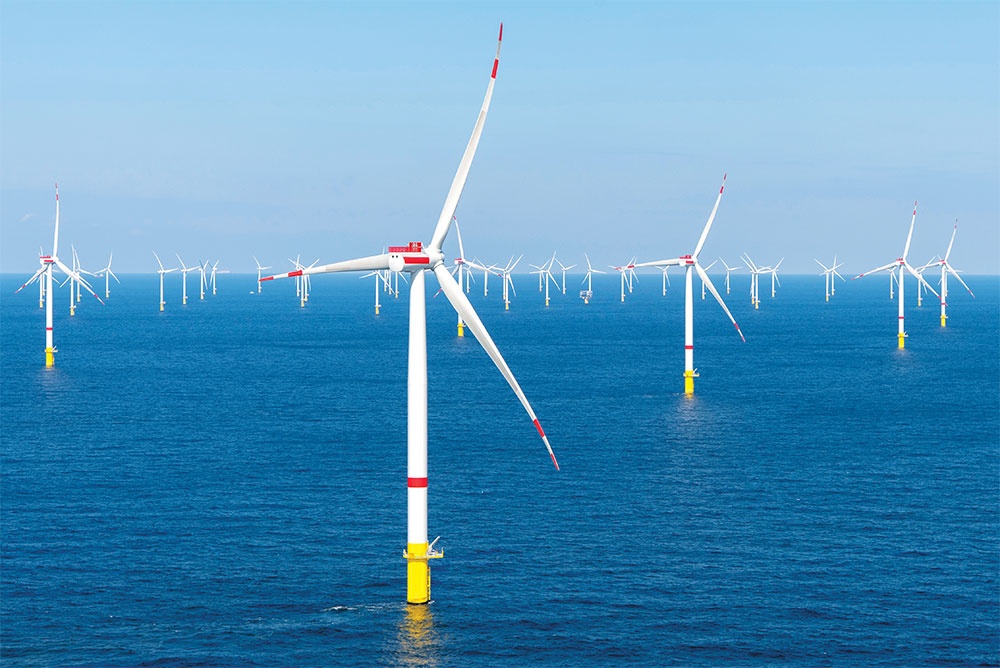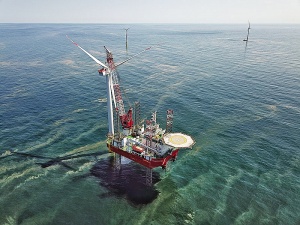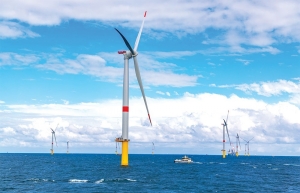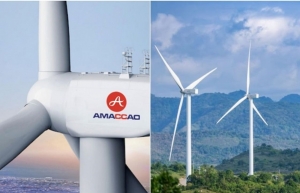Answers sought for offshore wind gains
Vietnam Electricity (EVN), PetroVietnam, and affiliated entities presented a detailed strategy for advancing offshore wind energy to the prime minister and the Ministry of Industry and Trade (MoIT) this month.
 |
| Answers sought for offshore wind gains |
If the corporations’ strategies are granted approval, the MoIT will utilise this information for a report to the government and a proposal to the National Assembly on the precise framework for executing offshore wind and gas power projects.
Hoang Dang Khoa, an official at the Electricity and Renewable Energy Authority under the MoIT, told VIR that approval of the strategy is uncertain as the current development of offshore wind energy in accordance with Power Development Plan VIII (PDP8) faces numerous obstacles.
“If there is no compelling plan of action, it will be extremely challenging to accomplish a facility scale of 6,000MW by 2030,” he said.
Khoa added that the execution of offshore wind power projects in Vietnam was being hindered by the absence of a marine spatial plan, unsuitable licencing processes and assessment standards, and regulations governing surveying, measuring, and monitoring.
“Offshore wind energy development is governed by approximately eight laws, numerous by-laws, and over a dozen competent management agencies and organisations. The duration to overcome such procedures can be up to three years,” he said.
In 2015, the government approved the country’s renewable energy development strategy towards 2030 and beyond. The strategy aimed to increase the share of electricity generated from renewable sources in the overall national electricity output from about 35 per cent in 2015 to 32 per cent in 2030, and finally to 43 per cent in 2050.
As a result of technological advancements, offshore wind energy investment costs are now comparable to those of conventional energy sources, having decreased by almost 70 per cent over time. An additional 30 per cent reduction in investment costs is anticipated for developed offshore wind power markets in 2023 as the downward trend in prices continues.
Dr. Nguyen Duc Cuong, deputy director of the Industrial Management Department at T&T Group, has spent three decades executing numerous investment initiatives in renewable energy. He said that a long-term perspective is necessary when constructing a new industry such as offshore wind power.
“Synchronous coordination among ministries and subdivisions is essential during the formulation of policies for the development of offshore wind power in Vietnam. Policy recognition and encouragement of investment and development in offshore wind power should align with the government’s green growth strategy, given its status as a nascent industry,” Cuong said.
Robust strategies are being deemed vital for attempts to entice major groups to invest in Vietnam in this area. A joint venture between T&T and Danish renewables giant Ørsted aimed to invest billions of US dollars to develop offshore wind power facilities in Vietnam. However, Ørsted earlier this year decided to cease all offshore wind power development activities in Vietnam.
Nguyen Quoc Thap, chairperson of the Vietnam Petroleum Association, said, “There is a significant risk of planning failure if a timely solution is not found. The end of the decade is only six years away but the typical duration for offshore wind power project implementation is 7-10 years.”
Thap stated that international and domestic investors continue to have a significant interest in offshore wind energy in Vietnam, despite obstacles pertaining to capital arrangement, investment efficiency, and policy.
“Several investors anticipate that in the aftermath of concluding the legal framework, officials may consider launching test and pilot projects, thereby gathering experience,” he said.
Policymakers, nevertheless, are opposed to experimental solutions. The MoIT posed a number of concerns in a document submitted to the prime minister regarding implementation of the PDP8 in October. One concern was that if EVN and enterprises are designated to pilot offshore wind power projects, many complications may arise. The legal pathway for the development of this particular power source also remains ambiguous.
The investment law does not specify the competent authority responsible for determining investment policy for offshore wind power, as stated by the MoIT. As a result, the delegation of project implementation to EVN and domestic enterprises lacks a legal foundation.
The MoIT has therefore recommended development of a revised electricity law, and for EVN to determine investment policies for offshore wind power projects to be stipulated in the investment law.
The ministry suggested that the prime minister immediately appoint EVN and domestic firms to conduct research and survey conditions for offshore wind power development.
 | Offshore power projects lure investors New investors are eager to prepare for their ambitions to develop offshore power projects in Vietnam. |
 | Offshore developers frustrated at lack of pilot policy There is still currently no legal avenue for foreign or domestic investors to take on offshore wind power pilots in Vietnam. |
 | Khe Sanh Wind Power proposes over 50 per cent foreign stake in Quang Tri Wind Farm Quang Tri People's Committee has reportedly received a proposal from Khe Sanh Wind Power JSC, the investor behind the Amaccao Quang Tri 1 Wind Farm project. The communication outlines plans for a significant shift in the company's shareholding structure, with a proposal to transfer a portion of its shares to a newly established Vietnamese company with over 50 per cent foreign ownership. |
What the stars mean:
★ Poor ★ ★ Promising ★★★ Good ★★★★ Very good ★★★★★ Exceptional
Related Contents
Latest News
More News
- Schaeffler reports strong early output from Dong Nai solar project (December 12, 2025 | 15:16)
- Forestry conference highlights biodiversity and sustainability goals (December 09, 2025 | 13:35)
- Home Credit honoured among top 10 sustainable companies in trade and services (December 09, 2025 | 12:18)
- SCG and seven member companies honoured in Top 100 Sustainable Businesses 2025 (December 08, 2025 | 09:00)
- Nestlé Vietnam pioneers sustainable development and promotes business connections (December 06, 2025 | 12:09)
- CSI 2025 highlights rise of Vietnam’s green champions (December 06, 2025 | 09:00)
- Acecook Vietnam named among top 100 sustainable businesses (December 06, 2025 | 08:00)
- Vietnam’s forest carbon credits draw global interest (December 05, 2025 | 17:41)
- Coro Energy to launch BESS Pilot in Vietnam (December 04, 2025 | 15:12)
- Vietnam strengthens energy storage pathway (December 04, 2025 | 15:05)

 Tag:
Tag:



















 Mobile Version
Mobile Version